You’ve heard of the beautiful fjords. But how much do you really know about Norway’s iconic scenery?
What do you think of when you think of Norway? Ibsen? Trolls? Dark winters and Light summers? The northern lights?
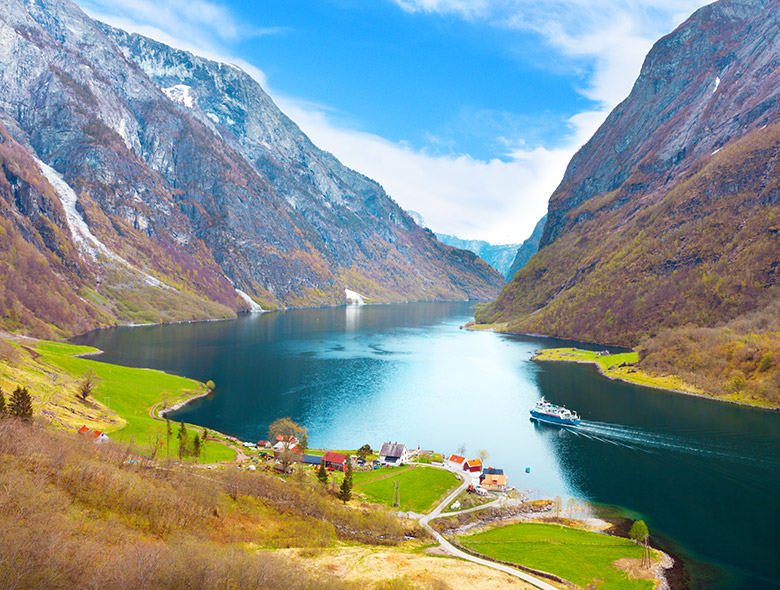
Arguably Norway’s most iconic and recognisable sight is the Norwegian fjords. Often stretching inland for hundreds of kilometres, their vastness is a wonder to behold.
Fjord facts
The fjords were created when the weight of huge glaciers carved out valleys over time. This leaves behind valleys that were subsequently flooded by sea water.
The long, narrow inlets of water and steep-sided mountain faces create one of the finest and natural wonders not just in Norway but the world.
This article explores the wonder and beauty of Norway’s fjords, including the most popular, the longest and deepest, the narrowest, and just for fun my favourite fjord.
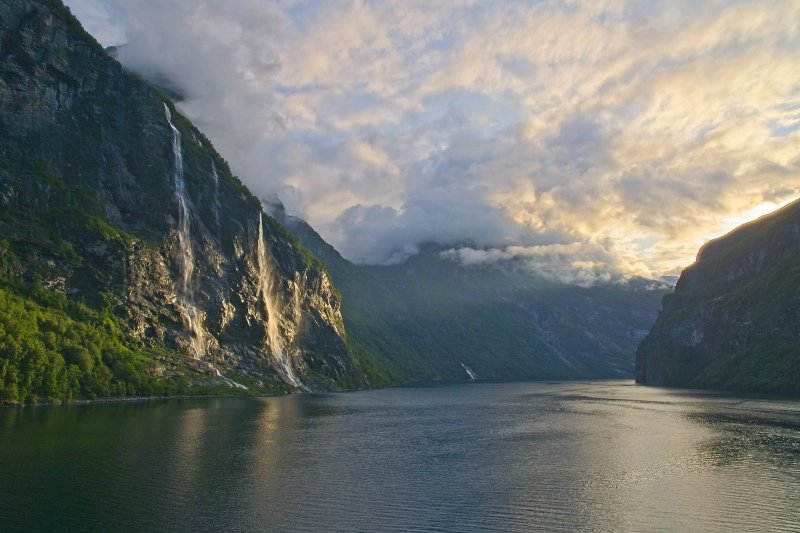
If you have an interest in Norway, possible ideas for future travel destinations, or just want to brush up on some random fjord knowledge, then read on, and learn some fun facts about the countries most iconic natural wonder.
Norway’s most popular fjord
In tourist terms, the Geirangerfjord is one of the most popular fjords. It was designated as a UNESCO World Heritage Site in 2005 and hosts many crossliners each year and draws visitors from around the world.
Geirangerfjord is located in Møre og Romsdal county, in central Norway. It is 15 kilometres (9.3 miles) in length and measures 1.5 kilometres at its widest point.
The fjord is home to many waterfalls, of which, The Seven Sisters (De Syv Søstrene) are the most famous. At the end of the fjord sits the picturesque Geiranger, a small village with a population of just 250.
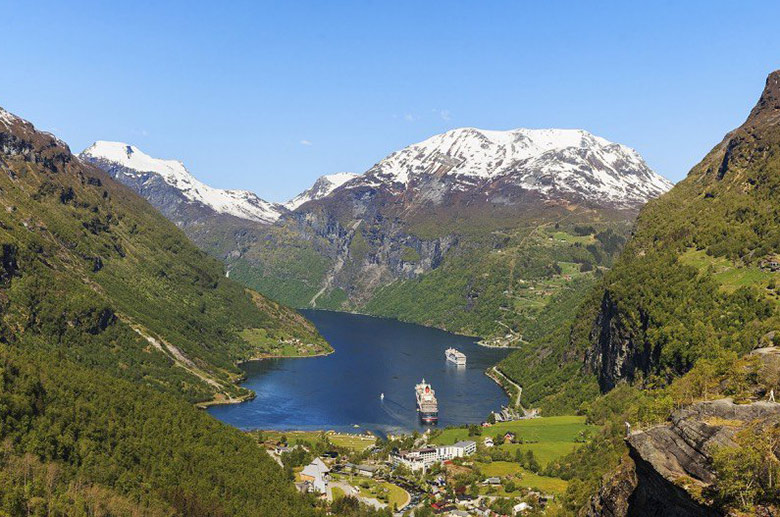
This small hamlet was the setting of the 2015 movie The Wave (Bølgen), a disaster film directed by Norwegian director, Roar Uthaug. It centres around the collapse of Åkerneset, a crevasse that falls into the fjord, creating a massive tsunami.
The longest and deepest fjord
The prize for the longest fjord in Norway goes to Sognefjord. Known as ‘the King of the fjords’, it’s located in the county of Sogn og Fjordane in the western part of the country.
The fjord spans some 205 kilometres (127 miles) and has a maximum width of 4.5 kilometres (2.8 miles) at its widest point.
Sognefjord has a maximum depth of 1,308 metres. For around 100 kilometres the depth of the fjord is measured at more 1,000 metres. This kind of depth means the rockface above sea level provides some spectacular cliff faces that rise sharply upwards as if reaching for the sky.
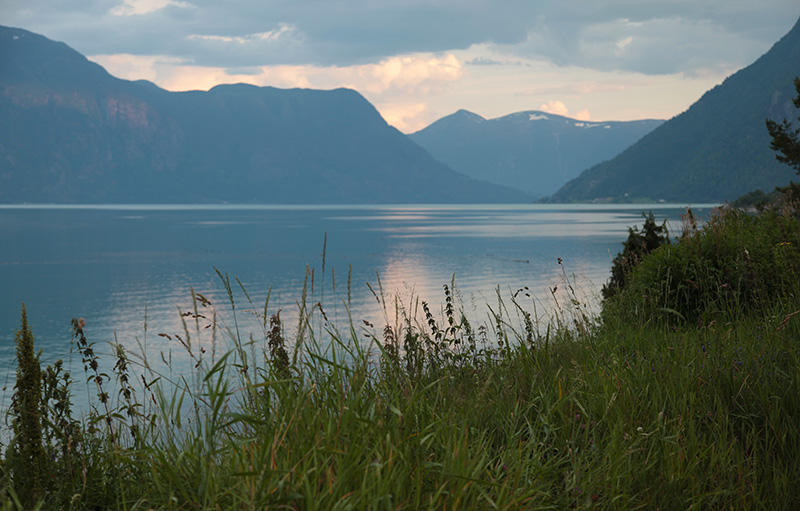
There are as many as twelve smaller fjords that stem from Sognefjord: Sognesjøen, Lifjorden, Høyangsfjord, Arnafjord, Esefjord, Fjærlandsfjord, Sogndalsfjord, Aurlandsfjord, Nærøyfjord, Lærdalsfjord, Årdalsfjord and Lustrafjord.
The last of those inlets is the home of the tiny village of Skjolden, which connects to the country’s most famous national park, Jotunheimen.
The narrowest western fjord
The best known of those branches of Sognefjord is Nærøyfjord, the narrowest of all the western fjords in Norway. At one point, it measures just 250 metres (820 ft) wide. The fjord’s total length is 18 kilometres (11 miles).
With its reaching snow-topped mountains, numerous waterfalls and picturesque houses, it’s not hard to see why this fjord proved such an inspiration for the hit movie Frozen.
Along with Geirangerfjord, Nærøyfjord is the only other Norwegian fjord to be granted UNESCO World Heritage status. The narrow passages can be navigated on boat trips which is the perfect way to absorb the full scenic nature of this sublime fjord.
The famous fjord in the north
Trollfjord is a narrow 2 kilometre (1.2 mile) fjord located in the Nordland county in Norway's arctic circle. It's an inlet off the Raftsundet strait and one of the narrowest of all the fjords, with a width of just just 100 metres (330 feet) at its mouth.
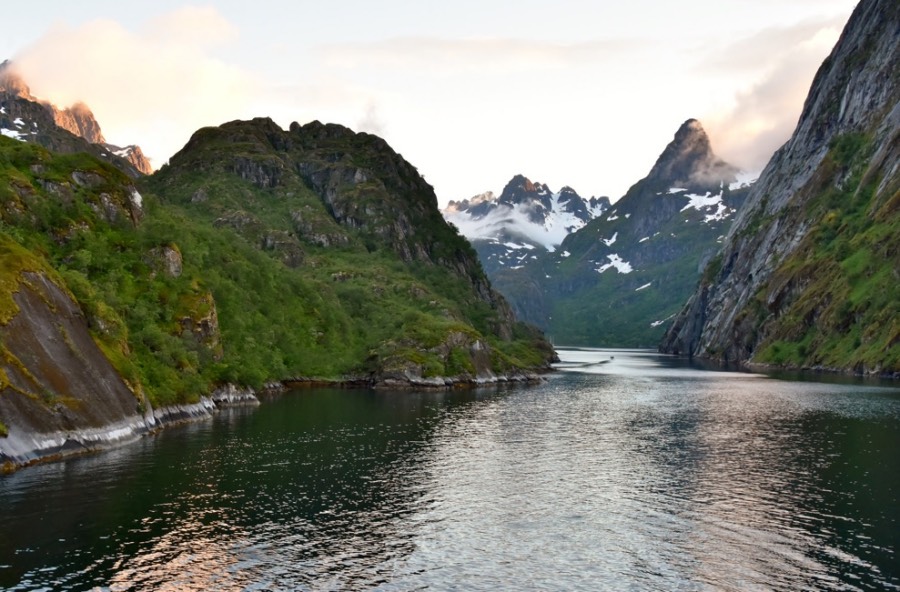
The steep mountains on either side of the fjord reach heights of 1100 metres (3608 feet) high, which makes for spectacular views.
The geographical makeup of this fjord means it is a truly unforgettable experience should you choose to hike or take a cruise in the area. On the Hurtigruten, for example!
In 1890, the fjord was the scene of The Battle of Trollfjord, a conflict overfishing controls in the local area between steamships and Lofotfisherman. The scene was famously depicted in a painting by Norwegian artist Gunnar Berg and remains one of the country's most recognisable paintings to this day.
Lysefjord facts
Given my passion and interest for Rogaland and south west Norway, it is perhaps no surprise that Lysefjord is my favourite fjord. It’s the home to Preikestolen (Pulpit Rock), a flat mountain plateau that juts out some 604 metres (1,982 ft) above sea level.
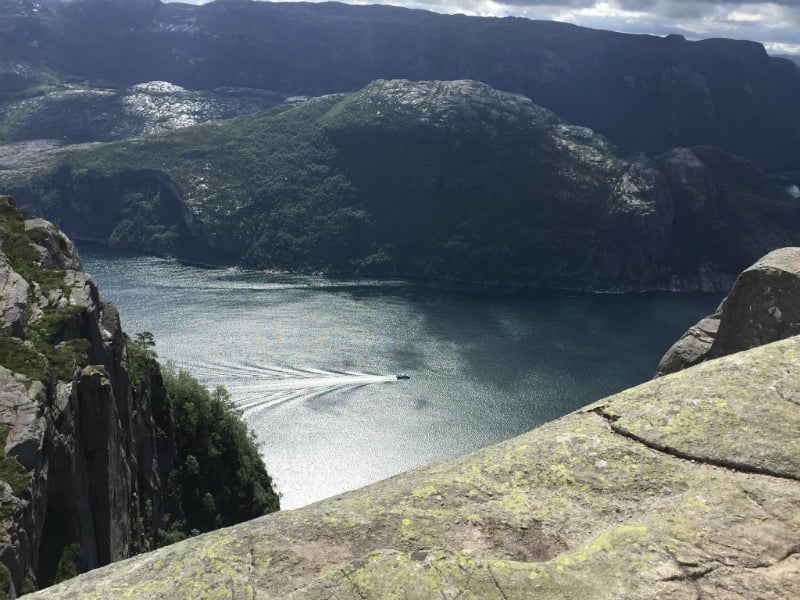
On a clear, bright day the hike to Preikestolen is a spectacular experience and for many, a once in a lifetime experience. The hike can take approximately 2 hours to reach the plateau from the base and a little longer when descending because of hiking etiquette which means it is polite and safest to give way those moving upwards.
You can read more about my hike to the rock in 2015 here, which includes some general advice and information if you are planning to do the hike yourself.
The entrance to Lysefjord is only 25 kilometres from Stavanger. From the city’s port, you can take a cruise up Lyseford, where you see goats grazing on the fjord side, have the opportunity to drink from fresh mountain waterfalls, or just get a different perspective on Preikestolen.
In all fjords there is an abundance of wildlife, from dolphins, seals, and porpoises to majestic birds and even reindeer. In the land surrounding the water, watch out for the fjord horse!
Whether you are visiting a single fjord on country’s west coast or taking in more than one on a cruise, there is always something to see and something new to experience in Norway’s fascinating fjords.


Very good description. Will visit after Corona.